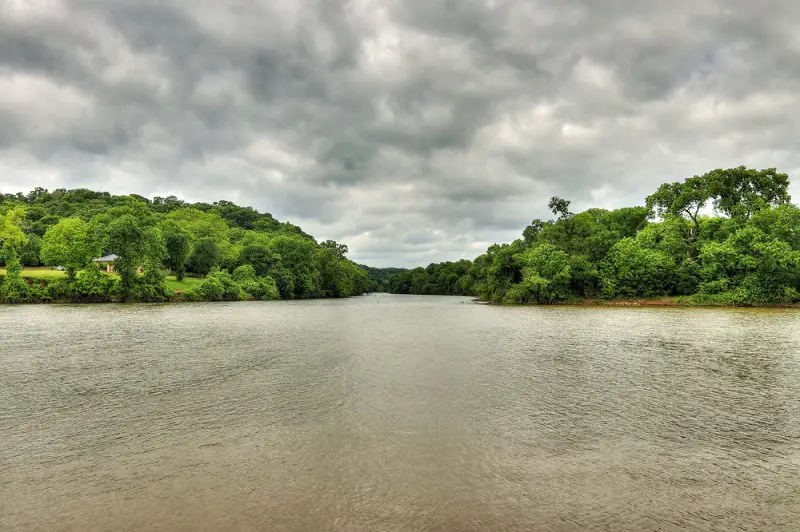
While walking along the river front in downtown Waco, you may have noticed that the water in the Brazos River has turned from green to brown. You might also notice that the same is true for its tributaries as well. What happened?
That begs the question, why is the Brazos River brown? Why does the water the appear cloudier and more discolored than normal?
That’s exactly what we’re going to take a look at in this article.
Why Is The Brazos River Brown?
The reason that the Brazos River is brown is because during a rainstorm, particles from the surrounding land are washed into the river making the water a muddy brown color. This results in the Brazos River turning brown in color and indicates water that has much higher turbidity values.
What Is Turbidity?
Turbidity is the amount of suspended particles, dissolved minerals, and dissolved organic matter in water that causes the discoloration. It is the factor responsible for water appearing cloudy or even opaque. It is determined by the way the particles scatter light rays as they move through the water.
The higher the concentration of suspended solids in the water, the murkier the water appears. With rain storms that drench the Waco area, a large amount of nutrient and sediment laden runoff enter the river basin, which in turn increases the amount of suspended sediment and algae concentrations in the water which ultimately makes the Brazos River brown.
According to the United States Environmental Protection Agency, these suspended materials in water include soil particles, algae, plankton, microbes, and other substances.
Is Brown Water Bad For The Fish and Environment?
High turbidity can have an impact on the aquatic ecosystem’s habitat quality as well as recreational quality. In slow-moving waters, higher turbidity can raise water temperatures because suspended particles absorb more heat. Elevated water temperatures, in turn, can reduce dissolved oxygen concentrations.
Turbidity reduces the amount of light that penetrates the water, which reduces photosynthesis and, depending on the waterbody, can reduce primary production. As the particles settle, they can blanket the stream bottom, particularly in slower flowing waters, causing habitat damage to fish, benthic macroinvertebrates, and aquatic vegetation.
According to The Texas Commission on Environmental Quality, “Suspended matter remains in the water column as long as there is sufficient current to carry it. The deposition of suspended matter creates problems for aquatic organisms by covering up habitat and filling in lakes and slow-moving areas of streams. By covering up habitat, the amount of invertebrate food for fish is reduced and predators feed less efficiently in turbid water. If the sediment load is too high fish gills can become clogged.”
Is It Safe To Swim In The Brazos River?
In the Waco area, there are many people who choose to swim in the Brazos River, however there are also many people who choose not to swim in the river.
When asked, the reasons might seem obvious. And it has a lot to do with why the Brazos River is brown; The runoff and all the stuff it brings into the water river with it.
The Brazos River is surrounded by agricultural farm land, including dairies and other livestock. It’s been reported that during heavy rainfalls, these farms (and everything that’s on the ground) will drain into the Brazos river.
With that said, swimming by itself is probably not what is unsafe, but accidently drinking the water. If that bacteria were to enter your body, it could potentially make you quite ill.
